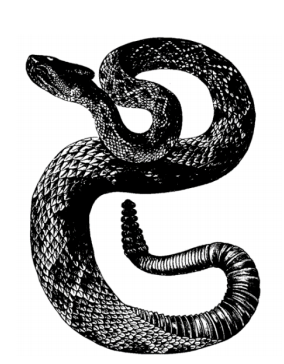2.5: Indicators
( \newcommand{\kernel}{\mathrm{null}\,}\)
Spotting an argument and evaluating whether the argument is any good are two distinct abilities. Usually you use them both at the same time. Before you can evaluate an argument, you have to identify it, so let’s begin with this skill. When you are reading a passage, ask yourself, "Is the writer intending to prove something? Am I being given any reasons intended to convince me to believe something or do something?" Detecting arguments can be difficult sometimes, but there are verbal clues to look for. The start of a conclusion is often indicated by the word therefore, so, or thus. In addition to these conclusion indicators, the terms because and suppose-that signal that a reason is coming. Since the technical term for reasons is premises, the terms because and suppose-that are called premise indicators. The logical reasoner is always on the alert for premise indicators and conclusion indicators.
Often, however, arguers are not so helpful, and we readers and listeners have to recognize an argument without the help of any indicator terms. And even when we have indicator terms, we can’t rely on them 100%. Those same terms might have other uses. For example, do you see why the conclusion indicator "so" is not working as a conclusion indicator in the following?
Air contains molecules. Dirt does, too. So does water.
There is no argument here, just a sequence of claims. The word “so” is indicating another term in the sequence. It is working as the word “and” usually works, not as a conclusion indicator of an argument.
Premise indicators are verbal clues that you are being given a reason or premise. Then ask yourself, "What are the reasons for the conclusion?" or "How is this point being supported?" Your answers supply the premises. There are verbal clues for finding premises, too. The words "since" and "because" are the most common premise indicator terms, but there are many others.
Does this sentence by Albert Einstein contain a conclusion indicator word that is actually working to indicate a conclusion?
The unleashed power of the atom has changed everything save our modes of thing, and we thus drift toward unparalleled catastrophe.
a. yes
b. no
- Answer
-
Answer (a). Einstein is giving an argument, and he is using the word “thus” to indicate his conclusion that the human race is drifting toward unparalleled nuclear catastrophe. (If you are reading this sentence, then the chances are that we haven't arrived there yet, even if we are drifting there.
Do all strong arguments have two or more premises plus at least one conclusion?
a. yes
b. no
- Answer
-
Answer (b). Some good arguments have only one premise. Here is an example: "Viruses are the simplest life forms, so that virus you are looking at with your microscope is simpler than other life forms."
When looking for an argument within a passage, you need to be alert that sometimes the conclusion is stated before the premises, sometimes after the premises, and sometimes embedded in the middle of the premises. Often, sentences are included that are neither premises nor conclusions; they are there for elaboration or for some other purpose, such as to entertain, to describe, to explain, to discount a possible complaint, and so forth. Here is an example of an argument from authority that contains both kinds of indicator phrases: Because the encyclopedia says that the whale shark is the biggest fish in the ocean, it follows that the whale shark really is the biggest fish on Earth. The word Because indicates a premise, and the phrase it follows that indicates the conclusion. Indicators come before what they indicate. After identifying this argument, you might go on to evaluate it as being fairly strong, but as leaving out the crucial information about whether there are freshwater fish bigger than any fish in the ocean. Can you think of one? There aren’t any. Here are lists of some more indicator phrases:
Premise Indicators
| since | because | for the reason that |
| assuming | suppose | as indicated by |
| is implied by | given that | in view of the fact that |
| for | granted that | one cannot doubt that |
Conclusion Indicators
| therefore | consequently | thus |
| this means | so | it follows that |
| shows that | implies that | proves that |
| leads me to believe that | hence | in conclusion |
| for this reason | accordingly | the moral is |
| means that | we can infer that | as a result |
| can only be true if |
The following phrases by themselves are not indicator phrases:
| if | on the contrary | yet |
| and | nevertheless | also |
So, do not trust these words to reliably indicate either a premise or a conclusion. Occasionally words that could be indicators do not function as indicators. Look at the word “since” in this example:
Since November when the inflationary spiral ended, state taxes have been high. State farm subsidies will therefore continue to rise.
This passage does contain an argument, and the conclusion indicator word therefore signals the conclusion, but the premise indicator word since isn't functioning to indicate a premise. It is working as a time indicator. Because since has multiple meanings, you need to determine whether it is functioning as a premise indicator in the particular situation you are looking at. The good news is that when it is a sign that some element of an argument is present, it always indicates a premise and never a conclusion.
Notice how different these two arguments are.
She’s not here, so she’s gone to the supermarket.
She’s not here, since she’s gone to the supermarket.
The two arguments have different conclusions, don’t they? One of the arguments is much stronger than the other. Which one is that?
Identify the indicator phrases in the following passage:
I’ve been in love with you ever since you began going out with my friend Charles. So you shouldn't say no one loves you now that he doesn't love you anymore.
- Answer
-
So is a conclusion indicator. Since is not operating as a premise indicator.
When you are suspicious that an argument is present in a passage, the best strategy for finding it, besides simply asking the arguer whether they are arguing, is to ask yourself which statements in the passage would be reasonably convincing premises for which other statements.
Do these passages contain arguments? If so, locate the conclusion. Identify each indicator phrase as being either a conclusion indicator or a premise indicator.

a. Never pick up a recently killed rattlesnake, because its nerve reflexes enable it to bite for some time after death.
b. Never pick up a recently killed rattlesnake. Its nerve reflexes enable it to bite for some time after death.
c. In a country with a billion people, even if you're a one-in-a-million type guy, there are still a thousand just like you.
d. Though rare on Earth, plasmas are the most common form of matter in the universe, even more common than gases.
- Answer
-
(a) This is an argument. The conclusion is that (you should) never pick up a recently killed rattlesnake. Because is the premise indicator. (b) This is an argument with the same conclusion as in (a). Notice that the word because appeared in (a) but not in (b). Consequently, you have to work harder to locate the argument in (b). Good writers use indicator words to show their intentions to the reader. (c) This is not an argument. If there are a billion people, then being one in a million is not very special, is it? (d) This is not an argument. This kind of plasma has nothing to do with blood plasma. Besides solids, liquids, and gases, matter also takes the form of plasmas. A plasma is super-ionized in the sense that every electron has been stripped away from the nucleus. There are no ordinary atoms in a plasma. All stars are made of plasma. So are electric sparks.
Discount Indicators
It is very common for passages containing arguments also to contain claims that are neither premises nor conclusions but instead send a signal that another claimed should be de-emphasized or discounted. Here’s an example where the phrase “Even though” is added to suggest that the cost of the sofa should be de-emphasized:

Even though that sofa is very expensive, we should buy it anyway because we need one and this one is already here in the apartment we are going to rent.
The claim “The sofa is very expensive” normally would be taken as a reason not to buy the sofa. That claim is discounted with the phrase, “Even though.” That phrase is called a “discount indicator.”

Discount indicators point to relevant factors that would normally count against the conclusion being drawn; the discount claim is there to reject the factor or de-emphasize it. Discounting often increases the psychological persuasiveness of the argument because it shows that the arguer has paid attention to all the relevant factors.
The following terms are frequently used as discount indicators:
even though
I realize that..., but
in spite of the fact that
while it may be true that


